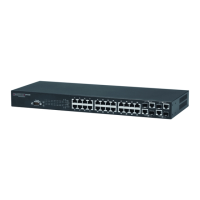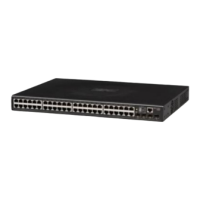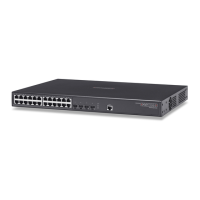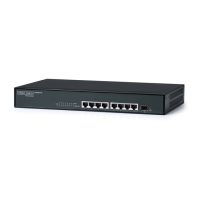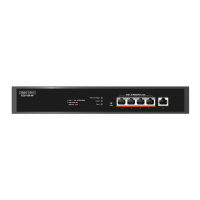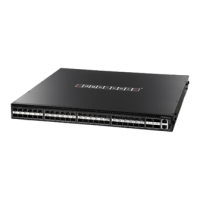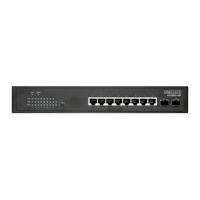C
HAPTER
6
| VLAN Configuration
IEEE 802.1Q Tunneling
– 178 –
Figure 68: Showing Dynamic VLANs Registered on the Switch
To show the members of a dynamic VLAN:
1. Click VLAN, Dynamic.
2. Select Show Dynamic VLAN from the Step list.
3. Select Show VLAN Members from the Action list.
Figure 69: Showing the Members of a Dynamic VLAN
IEEE 802.1Q TUNNELING
IEEE 802.1Q Tunneling (QinQ) is designed for service providers carrying
traffic for multiple customers across their networks. QinQ tunneling is used
to maintain customer-specific VLAN and Layer 2 protocol configurations
even when different customers use the same internal VLAN IDs. This is
accomplished by inserting Service Provider VLAN (SPVLAN) tags into the
customer’s frames when they enter the service provider’s network, and
then stripping the tags when the frames leave the network.
A service provider’s customers may have specific requirements for their
internal VLAN IDs and number of VLANs supported. VLAN ranges required
by different customers in the same service-provider network might easily
overlap, and traffic passing through the infrastructure might be mixed.
Assigning a unique range of VLAN IDs to each customer would restrict
customer configurations, require intensive processing of VLAN mapping
tables, and could easily exceed the maximum VLAN limit of 4096.
QinQ tunneling uses a single Service Provider VLAN (SPVLAN) for
customers who have multiple VLANs. Customer VLAN IDs are preserved
and traffic from different customers is segregated within the service

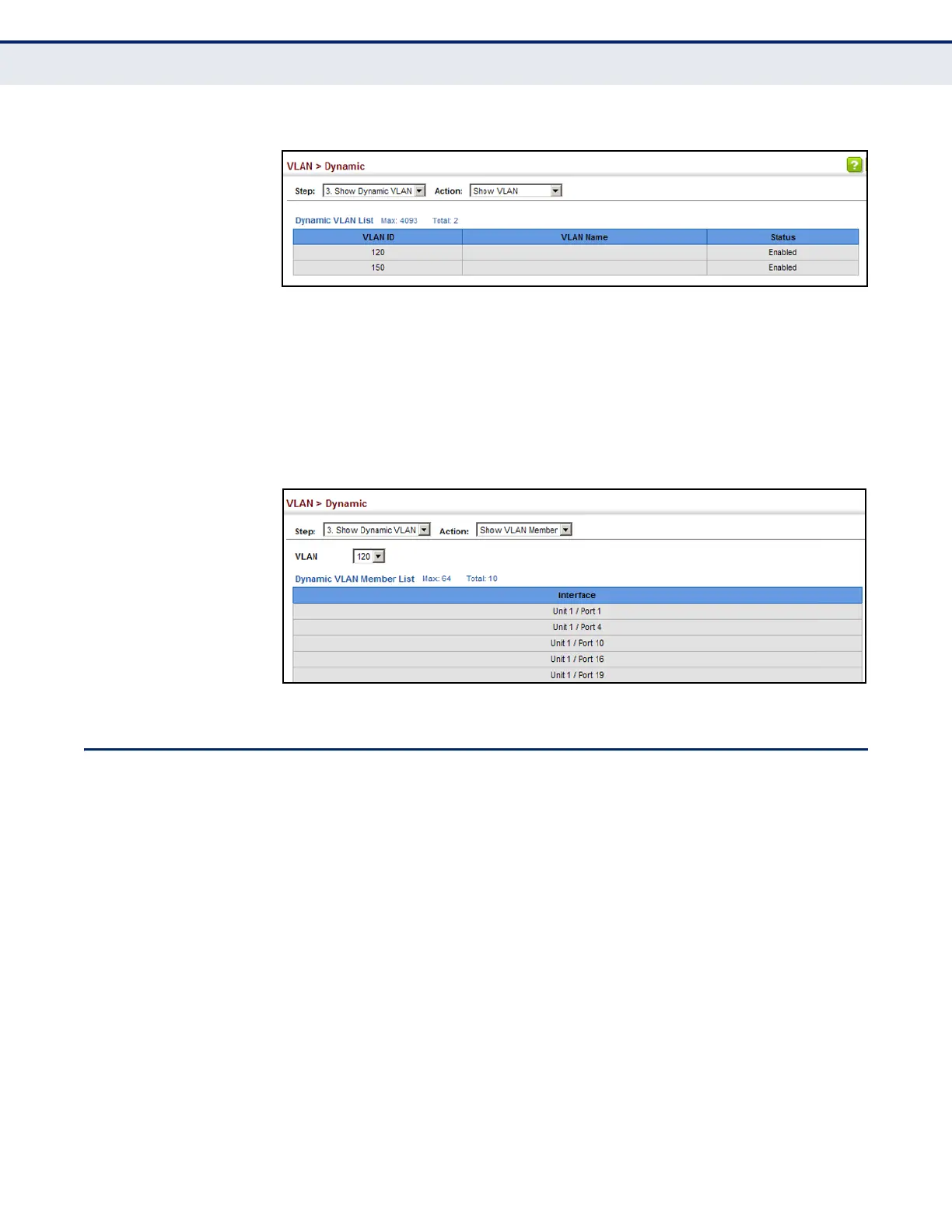